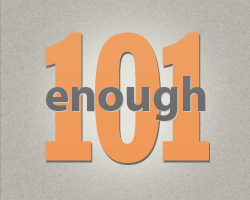
Editor’s Note: As part of the series Enough 101, this post is intended to provide a contextual background for understanding the complex issues that the Enough Project works on. To learn more about the LRA, read “The Lord’s Resistance Army: Who Are They?”
Joseph Kony’s Lord’s Resistance Army, or LRA, originated in northern Uganda, spread to eastern Congo, Central African Republic, and South Sudan, and is now suspected to have moved even further north to operate in the historically conflict-ridden Darfur region of Sudan. The LRA’s status as a regional threat and U.S. designated terrorist organization has garnered international attention and focused the efforts of the U.S., affected governments, and African Union on arresting Joseph Kony and bringing an end to the LRA’s deadly regional operations.
Uganda (which has been pursuing the LRA for more than 20 years) and Sudan have a history as rivals, often providing safe haven to each other’s rebel groups. Uganda supported the rebelling Sudan People’s Liberation Army, or SPLA, in Sudan’s Second Civil War, and Sudan backed Uganda’s nemesis, the LRA. In 1994, the LRA began receiving support—in the form of weapons, ammunition, military training, and use of military bases in what was then the southern part of Sudan, now the independent Republic of South Sudan—from the Sudanese government.
Additionally, the government of Sudan in Khartoum tends to support proxy armies to fight its battles (as seen in Sudan’s support of the marauding Janjaweed in Darfur and various militias in South Sudan). In the early 2000s the LRA fought as such a proxy on the side of the Sudanese government against the SPLA.
Though Khartoum claims to have cut off all support to the LRA in 2002, it is very likely that Kony and Sudanese President Omar al-Bashir (both wanted by the International Criminal Court for crimes against humanity) continued this mutually beneficial relationship until 2005, when Omar al-Bashir’s government in Khartoum signed the Comprehensive Peace Agreement with the South Sudan rebels, which led to South Sudan’s independence in July 2011.
After such a long history of collusion between Kony and Bashir, it is no surprise that the LRA eventually made its way north to perpetrate attacks in the Darfur region of Sudan. The U.N. Group of Experts reported that in July 2009, Kony ordered the LRA to move into eastern Central African Republic “with the intention of proceeding to Darfur.” The LRA was first confirmed in Darfur, which abuts South Sudan’s northernmost border, by the Enough Project in March 2010 at the same time Khartoum was intensifying its own attacks in Darfur. In an oped for Foreign Policy at the time, then Enough Project Executive Director John Norris wrote:
The evidence clearly suggests that advance LRA scouts coordinated with Sudanese armed forces well in advance of the LRA's arrival in Darfur, and it seems implausible that local Sudanese armed forces commanders would welcome the group in Darfur without seeking approval from Khartoum, including Bashir. There are also suggestions that the LRA has received direct logistical support from the Sudanese army since arriving in Darfur.
This development was even more problematic because Ugandan forces did not have permission to cross into Sudan to pursue the LRA.
According to two eyewitnesses, in October 2010 a mission led by Kony’s chief body guard met with a Sudanese intelligence officer and the armed forces commander of the western region of Sudan to request assistance and asylum for Kony. As a result, the Sudanese provided the LRA with satellite phone numbers “to facilitate future contacts with Kony.”
Between January and March 2011, the LRA staged attacks in Raga County, South Sudan, which borders Darfur, potentially signaling renewed efforts to move north and reconnect with Khartoum to seek financial or material support. Fears that the LRA would become involved in a renewal of the Sudan-South Sudan conflict upon South Sudan’s secession in July 2011 did not come to fruition, and it wasn’t until a year later that the LRA was again allegedly spotted near Darfur.
In April 2012, a Darfuri rebel group said that Kony and the LRA were in Darfur, and a week later a Ugandan army spokesman agreed, claiming that they had intelligence locating the LRA in Sudan and linking the Khartoum government to the LRA. However, this information is not confirmed, and considering Uganda and Sudan’s long history of conflict and trading accusations, may not be credible. Sudan denied all allegations of supporting the LRA, while Ugandan President Museveni threatened to defeat Sudan if the allegations proved to be true.
If the allegations are true, the regional armies pursuing the LRA would likely find themselves unable to operate in Sudan, and the LRA could find safe haven there. This would be a major obstacle to success for the U.S. military advisors deployed in the region and the new African Union initiative to end the LRA.

